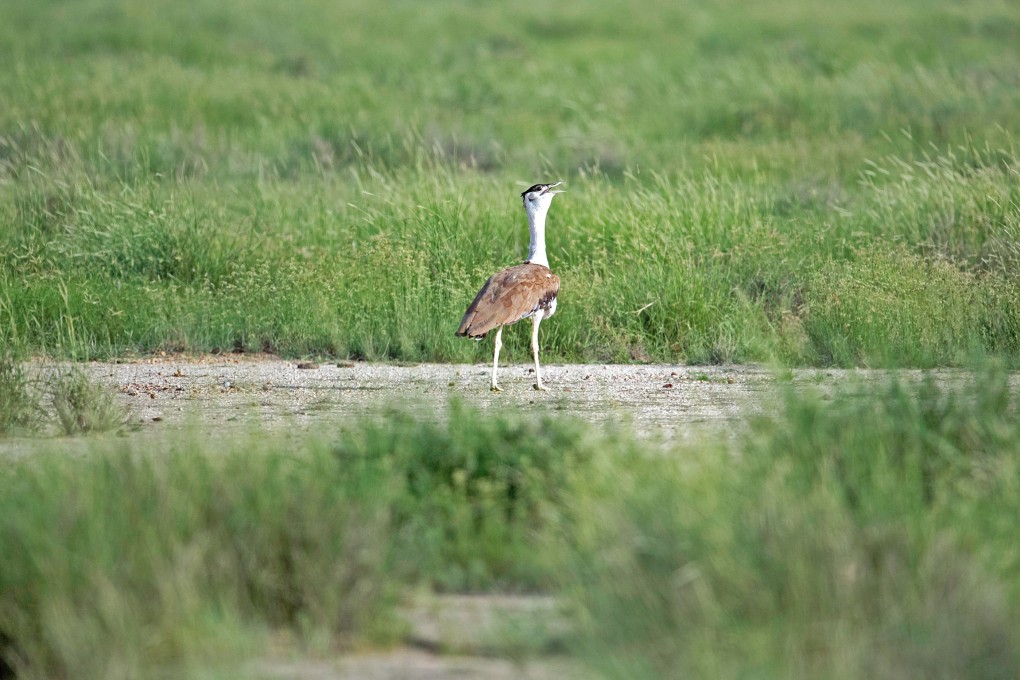India conservationists up in arms over power lines that could kill endangered bird
- In the 1980s, India had about 1,500-2,000 Great Indian Bustards. Now, only 120-150 of them remain
- The bustard, once in the running for India’s national bird but lost to the peacock, has poor vision and is too heavy to change its flying direction at the last minute

Conservationists in India are up in arms over plans by the electricity regulator to allow power companies in northern Rajasthan state to proceed with projects that could endanger the Great Indian Bustard, one of the heaviest flying birds in the world.
The bustard has poor vision and is so heavy it cannot change its flying direction at the last minute. Failure to see overhead electricity lines in time results in almost certain electrocution and death. About 10 bustards are electrocuted every year across India.
Electricity officials are aware of the danger posed to the bird by these lines but say it will be mitigated by the installation of “bird diverters” – flaps hung on the overhead lines to act as reflectors – that allow birds to spot the lines from a distance and change its flight path.

But wildlife biologist Sumeet Dookia and environmental groups said the diverters would only reduce the mortality rate by around 10 per cent. Advocates also said the proposal violated several Supreme Court rulings aimed at preventing the species’ extinction, and they plan to ask the court to tell the regulator to withdraw its proposal.
The birds and the lines have been an issue since 2019, when the Supreme Court started hearing petitions from environmentalists demanding that power lines which criss-cross the bird’s habitat and move solar and wind energy to the grid, be moved underground.
These lines are increasing in numbers as India’s renewable energy companies commission more solar and wind power projects across Rajasthan, such as the Thar Desert. There are few large parcels of land suitable for solar and wind energy generation projects in India but the hot and vast Thar Desert is ideal for both.
Last April, the court ruled that the alternative energy companies must move their lines underground. “There cannot be disagreement whatsoever that appropriate steps are required to be taken to protect the said species of birds,” the judges said in their ruling.